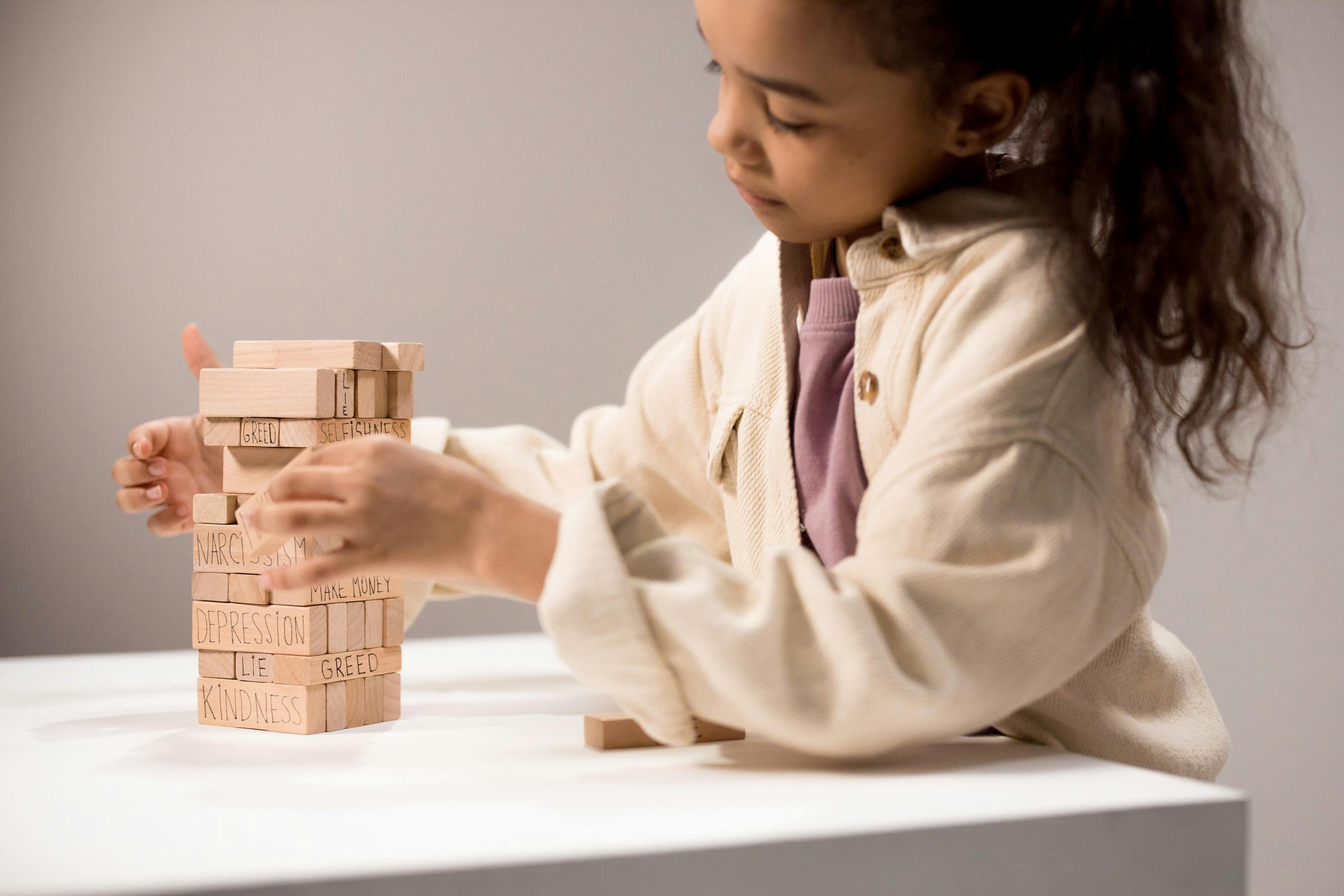Knowing Kindness and Empathy

Kindness and empathy are cornerstones of early development that influence how kids engage with their environment. sympathy, which is merely feeling concern for someone’s plight without fully grasping their emotional state, is not the same as empathy, which is the capacity to comprehend and share the feelings of another. This difference is important because empathy creates a strong bond that results in sincere acts of kindness. When kids develop empathy, they go beyond simply noticing feelings in others; instead, they put themselves in their shoes and experience those feelings. This profound realization forces kindness to follow naturally because empathy demands action. The cycle is lovely: kindness leads to empathy, which then encourages more sympathetic interactions and strengthens social bonds. This has a significant effect on social interactions and fosters a community that is more sympathetic, perceptive, and encouraging.
Building Kindness and Empathy in Children

Parents’ and caregivers’ roles
- Children’s development of kindness and empathy is greatly influenced by their parents and other caregivers. They set a powerful example by modelling empathy and kindness through their everyday actions.
- Children discover that these ideals are a way of life rather than just a set of words when they witness small acts of kindness like smiling at a complete stranger or lending a helping hand.
- This demonstration of compassion in daily interactions lays the groundwork for children to emulate these behaviours.
Equally important is the development of a emotional vocabulary. Encouraging children to express their feelings openly and without judgement fosters emotional intelligence. When children can name their emotions, they’re better equipped to understand and empathise with others. This emotional articulation is a cornerstone of empathy, enabling children to navigate their social world with sensitivity and care.
Conflict resolution presents a unique opportunity for parents to demonstrate empathy. Strategies such as active listening, acknowledging feelings, and seeking mutually beneficial solutions teach children that understanding and kindness are key in resolving disagreements. By approaching conflicts with empathy, parents not only resolve the immediate issue but also instil lifelong skills in their children. These moments of conflict, though challenging, become valuable lessons in compassion, understanding, and respect for others’ perspectives.
Through these actions and strategies, parents and caregivers not only teach empathy and kindness but also cultivate a nurturing environment where children feel valued and understood. This foundation of empathy and kindness is essential, as it influences how children interact with the world, fostering a future where compassion and understanding prevail.
Creating an Empathetic Environment at Home

The significance of a supportive and understanding home atmosphere cannot be overstated. In such an environment, children learn that their feelings are valid and important, which is crucial for their emotional development. A home where empathy is valued encourages children to open up, share their experiences, and support one another. This foundation of understanding and support is pivotal in nurturing empathetic and kind individuals.
- Encouraging sharing and cooperation among siblings plays a vital role in developing empathy. When siblings are encouraged to share not just their toys but also their feelings and experiences, they learn to understand and respect each other’s perspectives.
- This mutual respect and understanding foster a bond that is both empathetic and supportive.
- Activities that promote teamwork and sharing can significantly enhance this learning process, making empathy a natural part of their interactions.
The role of pets in a family can be surprisingly impactful in teaching empathy and responsibility. Caring for a pet requires children to consider the needs and well-being of another living being, fostering a sense of responsibility and empathy. Through this care, children learn valuable lessons about compassion, understanding, and the importance of looking after those who depend on us. Pets can be wonderful teachers of empathy, showing children the joy that comes from nurturing and caring for another.
Creating an empathetic environment at home sets the stage for children to grow into compassionate, understanding, and kind individuals. By fostering an atmosphere of support, encouraging cooperation among siblings, and integrating pets into the family, parents can significantly influence their children’s ability to empathise with others. This foundation of empathy and kindness is not just beneficial for the individual but for society as a whole, as it cultivates a future where compassion and understanding are valued and prioritised.
Activities to Encourage Empathy and Kindness

Empathy-building games and activities are tailored for different age groups, ensuring that every child can participate in this crucial learning process. For the younger ones, simple games that involve taking turns and sharing can lay the groundwork for understanding others’ feelings. Older children might engage in more complex role-playing activities, which allow them to experience diverse perspectives and challenges firsthand.
The power of storytelling and role-playing cannot be overstated in the quest to foster empathy. Through stories, children are transported into the lives of characters from different backgrounds and situations, broadening their understanding of the world. Role-playing then takes this a step further, giving children the chance to ‘live’ these stories, grappling with the emotions and decisions their characters face. This immersive experience is invaluable in developing a deep-seated empathy and kindness.
Community service and volunteering offer a hands-on approach to learning by doing. When children participate in community service, they see the direct impact of their kindness on others, reinforcing the importance of empathetic actions. Volunteering can range from helping out at local animal shelters to assisting in community gardens, providing a variety of experiences that cater to different interests while teaching the same core values of empathy and kindness.
These activities, woven into the fabric of children’s lives, not only teach empathy and kindness but also demonstrate these values in action. By engaging in empathy-building games, delving into the power of storytelling and role-playing, and participating in community service, children learn that empathy and kindness are not just concepts, but a way of living. This holistic approach ensures that the lessons learned will stay with them, shaping a future where compassion and understanding are at the forefront of their interactions.
Overcoming Challenges to Empathy

- Everyday Interactions: Encouraging children to talk about their feelings and those of others helps bridge gaps in understanding and fosters a more empathetic outlook.
- Bullying: Strategies for victims include seeking support and expressing their feelings, while perpetrators need guidance to understand the impact of their actions and learn healthier ways to interact. Bystanders can be empowered to intervene safely or seek help, playing a pivotal role in creating a supportive environment.
- Digital Age Challenges: Encouraging mindful use of digital media, alongside real-world interactions, can help maintain a healthy balance, ensuring that children develop empathy and maintain meaningful relationships.
Through understanding and addressing these challenges, we can guide children towards becoming more empathetic and kind individuals. This journey requires patience, understanding, and a commitment to nurturing these values in every aspect of their lives.
Fostering a Lifelong Commitment to Kindness

- Reflection on Kind Acts: When children take a moment to consider how their actions affect others, they begin to see the world through a more compassionate lens. This reflection not only reinforces the value of their kind deeds but also inspires them to continue spreading kindness.
- Setting Personal Goals: By identifying specific ways they can be more empathetic and kind, children can actively work towards becoming more compassionate individuals. These goals, whether they involve offering a listening ear or helping a friend in need, serve as stepping stones towards a more empathetic future.
- Mentors and Role Models: Children look up to adults in their lives, learning from their actions and attitudes. When mentors and role models consistently demonstrate empathy and kindness, they set a powerful example for children to follow. This influence is a crucial component in nurturing a lifelong commitment to these values.
Through these strategies, we can guide children towards not only understanding the importance of empathy and kindness but also integrating these values into their daily lives. This commitment to fostering empathy and kindness from a young age promises a future where compassion and understanding are at the heart of our community.
In Conclusion
Empathy and kindness shape a brighter future. These values, deeply rooted in understanding and compassion, pave the way for a more empathetic society. Through the nurturing guidance of parents, caregivers, and educators, children learn to navigate the complexities of human emotions, balancing empathy with kindness in every interaction. The journey from empathetic understanding to acts of kindness offers profound lessons in humanity, fostering a culture where compassion is instinctive. Let us commit to this path, encouraging the next generation to carry forward the legacy of empathy and kindness, for a world where these virtues illuminate every corner of our shared existence.
Encouraging Empathy and Kindness in Children FAQs
Yes, empathy can begin to be nurtured in very young children through simple actions like teaching them to notice and respond to others’ feelings. Using everyday moments to point out how others might be feeling and encouraging your child to express care and concern can lay the foundation for empathy. Picture books that illustrate emotions can also be effective tools for teaching young children about empathy.
Encouraging your child to be kind to themselves involves teaching them self-compassion and recognizing their own worth and feelings. Practicing positive self-talk and acknowledging their efforts and strengths can help build their self-esteem. Setting aside time for activities that they enjoy and that make them feel good about themselves can also reinforce the importance of self-care and kindness.
Empathy can be taught by modeling empathetic behavior yourself, as children learn a lot by observing adults. Discuss feelings and emotions openly with your child, helping them to recognize and name their own feelings and those of others. Engaging in role-playing games can also be a practical way to teach perspective-taking and empathy.
Parents and educators can work together to promote empathy and kindness by consistently modeling these behaviors and providing unified messages about their importance. Collaborating on activities that encourage empathy, such as community service projects or empathy-focused curriculum, can reinforce these values. Open communication between parents and educators about a child’s progress and challenges in developing empathy and kindness can also support a cohesive approach to nurturing these qualities.
Peer interactions provide natural opportunities for children to practice empathy by sharing, taking turns, and resolving conflicts. Encouraging group activities that require cooperation and understanding can help children learn to consider others’ feelings and perspectives. Guiding children through the process of making amends or solving problems together can also teach valuable lessons in empathy and kindness.
Addressing bullying behavior involves open, honest conversations about the impact of their actions on others, emphasizing empathy and understanding. It’s important to set clear and consistent consequences for bullying behavior while also teaching conflict resolution and communication skills. Encouraging involvement in cooperative activities can help develop social skills and empathy towards others.
Encouraging children to participate in acts of kindness, such as making cards for the elderly or helping a friend in need, can foster a sense of empathy and compassion. Reading stories or watching movies that highlight kindness and discussing the characters’ actions and feelings can further reinforce these values. Volunteering together as a family can also provide hands-on experiences of giving and kindness.
Gratitude has a positive impact on children’s empathy and kindness, as it helps them appreciate what they have and understand the value of giving to others. Encouraging children to express gratitude, through daily reflections or thank-you notes, can deepen their awareness of others’ roles in their lives. This practice not only fosters empathy but also builds a lasting habit of recognizing and appreciating kindness in others.
Emotional intelligence is crucial in developing kindness and empathy as it involves recognizing, understanding, and managing one’s own emotions and those of others. Teaching children to identify and express their emotions accurately can help them better understand how their actions affect others. Activities that promote emotional intelligence, such as role-playing and discussing emotions, can enhance a child’s ability to empathize with others and act kindly.
Storytelling plays a significant role in developing empathy as it allows children to step into someone else’s shoes and experience their feelings and perspectives. Discussing the characters’ emotions, actions, and motivations can help children understand and relate to different viewpoints. Stories with diverse characters and settings can also broaden children’s understanding of the world and the people in it.

Jasmine Duque-Love is a mother of one and a practicing physiotherapist with a Phd in Physiotherapy

